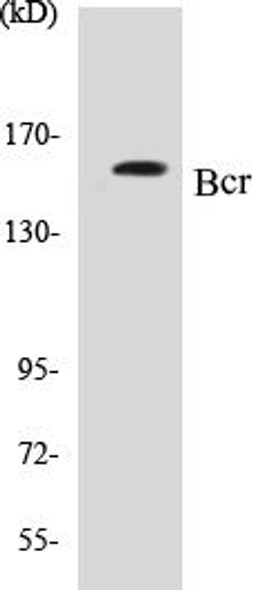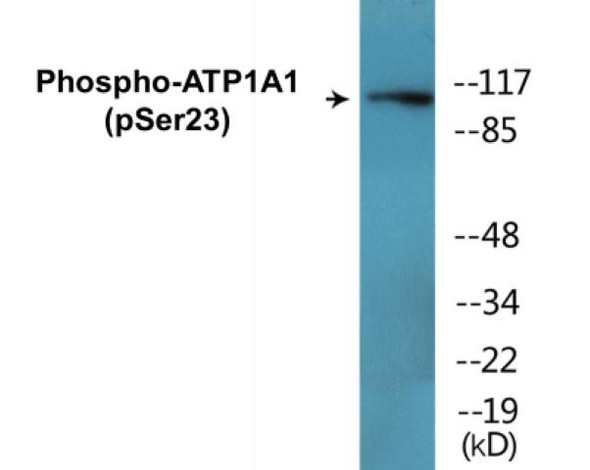Bcr (Phospho-Tyr360) Colorimetric Cell-Based ELISA Kit
- SKU:
- CBCAB01368
- Product Type:
- ELISA Kit
- ELISA Type:
- Cell Based Phospho Specific
- Reactivity:
- Human
- Mouse
- Detection Method:
- Colorimetric
Description
Bcr (Phospho-Tyr360)Colorimetric Cell-Based ELISA Kit
The BCR Phospho-Tyr360 Colorimetric Cell-Based ELISA Kit is a powerful tool for studying the BCR signaling pathway in cell-based assays. This kit allows for the specific and quantitative measurement of phospho-tyrosine 360 on the BCR protein, providing valuable insights into the activation and regulation of this important signaling pathway.The BCR signaling pathway plays a critical role in B cell development, activation, and differentiation, making it a key target for research in immunology and cancer biology.
By accurately measuring phospho-tyrosine 360 on the BCR protein, researchers can gain a better understanding of how this pathway is dysregulated in various diseases and potentially identify new therapeutic targets.With its high sensitivity and specificity, the BCR Phospho-Tyr360 Colorimetric Cell-Based ELISA Kit offers reliable and reproducible results, making it a valuable tool for a wide range of research applications. Study the BCR signaling pathway with confidence using this innovative ELISA kit.
| Product Name: | Bcr (Phospho-Tyr360) Colorimetric Cell-Based ELISA |
| Product Code: | CBCAB01368 |
| ELISA Type: | Cell-Based |
| Target: | Bcr (Phospho-Tyr360) |
| Reactivity: | Human, Mouse |
| Dynamic Range: | > 5000 Cells |
| Detection Method: | Colorimetric 450 nm |
| Format: | 2 x 96-Well Microplates |
The Bcr (Phospho-Tyr360) Colorimetric Cell-Based ELISA Kit is a convenient, lysate-free, high throughput and sensitive assay kit that can detect Bcr protein phosphorylation and expression profile in cells. The kit can be used for measuring the relative amounts of phosphorylated Bcr in cultured cells as well as screening for the effects that various treatments, inhibitors (ie. siRNA or chemicals), or activators have on Bcr phosphorylation.
Qualitative determination of Bcr (Phospho-Tyr360) concentration is achieved by an indirect ELISA format. In essence, Bcr (Phospho-Tyr360) is captured by Bcr (Phospho-Tyr360)-specific primary (1ø) antibodies while the HRP-conjugated secondary (2ø) antibodies bind the Fc region of the 1ø antibody. Through this binding, the HRP enzyme conjugated to the 2ø antibody can catalyze a colorimetric reaction upon substrate addition. Due to the qualitative nature of the Cell-Based ELISA, multiple normalization methods are needed:
| 1. | A monoclonal antibody specific for human GAPDH is included to serve as an internal positive control in normalizing the target absorbance values. |
| 2. | Following the colorimetric measurement of HRP activity via substrate addition, the Crystal Violet whole-cell staining method may be used to determine cell density. After staining, the results can be analysed by normalizing the absorbance values to cell amounts, by which the plating difference can be adjusted. |
| Database Information: | Gene ID: 613, UniProt ID: P11274, OMIM: 151410/608232, Unigene: Hs.517461/Hs.715409 |
| Gene Symbol: | BCR |
| Sub Type: | Phospho |
| UniProt Protein Function: | Bcr: a protein with serine/threonine protein kinase activity and is a GTPase-activating protein (GAP) for RAC1 and CDC42. The amino-terminal region of Bcr contains an oligomerization domain, a serine/threonine kinase domain and a region that binds SH2 domains. The middle of the protein has a PH domain and a region of sequence similarity to the guanine nucleotide exchange factors for the Rho family of GTP binding proteins. The carboxy-terminal region promotes the exchange of RAC or CDC42-bound GDP by GTP, thereby activating them. A breakpoint cluster region protein that participates in a t(9;22)(q34;q11) chromosomal translocation that produces a BCR-ABL oncogene responsible for chronic myeloid leukemia (CML), acute myeloid leukemia (AML) and acute lymphoblastic leukemia (ALL). The function of wild type Bcr in cells remains unclear. PDGF receptor may use Bcr as a downstream signaling mediator. Tyr177 of human Bcr, phosphorylated in the Bcr-Abl fusion protein, provides a docking site for Gab2 and GRB2, and is important in the transforming activity of Bcr-Abl. Sequence variants of the Bcr protein may be associated with bipolar disorder. Two alternatively spliced isoforms of the human protein have been reported. |
| UniProt Protein Details: | Protein type:Kinase, protein; GAPs; Oncoprotein; GEFs, Rac/Rho; Protein kinase, atypical; Protein kinase, Ser/Thr (non-receptor); EC 2.7.11.1; GAPs, Rac/Rho; ATYPICAL group; BCR family Chromosomal Location of Human Ortholog: 22q11.23 Cellular Component: postsynaptic membrane; protein complex; membrane; postsynaptic density; cytosol; cell junction Molecular Function:protein serine/threonine kinase activity; protein binding; Rho guanyl-nucleotide exchange factor activity; enzyme binding; protein-tyrosine kinase activity; kinase activity; ATP binding; GTPase activator activity Biological Process: inner ear morphogenesis; peptidyl-tyrosine phosphorylation; regulation of cell cycle; protein amino acid autophosphorylation; platelet-derived growth factor receptor signaling pathway; response to lipopolysaccharide; signal transduction; protein amino acid phosphorylation; regulation of small GTPase mediated signal transduction; negative regulation of neutrophil degranulation; negative regulation of inflammatory response; small GTPase mediated signal transduction; positive regulation of phagocytosis; brain development; neuromuscular process controlling balance; actin cytoskeleton organization and biogenesis; negative regulation of cell migration Disease: Leukemia, Acute Lymphoblastic; Leukemia, Chronic Myeloid |
| NCBI Summary: | A reciprocal translocation between chromosomes 22 and 9 produces the Philadelphia chromosome, which is often found in patients with chronic myelogenous leukemia. The chromosome 22 breakpoint for this translocation is located within the BCR gene. The translocation produces a fusion protein which is encoded by sequence from both BCR and ABL, the gene at the chromosome 9 breakpoint. Although the BCR-ABL fusion protein has been extensively studied, the function of the normal BCR gene product is not clear. The protein has serine/threonine kinase activity and is a GTPase-activating protein for p21rac. Two transcript variants encoding different isoforms have been found for this gene. [provided by RefSeq, Jul 2008] |
| UniProt Code: | P11274 |
| NCBI GenInfo Identifier: | 143811366 |
| NCBI Gene ID: | 613 |
| NCBI Accession: | P11274.2 |
| UniProt Secondary Accession: | P11274,P78501, Q12842, Q4LE80, Q6NZI3, |
| UniProt Related Accession: | P11274 |
| Molecular Weight: | 1271 |
| NCBI Full Name: | Breakpoint cluster region protein |
| NCBI Synonym Full Names: | breakpoint cluster region |
| NCBI Official Symbol: | BCR |
| NCBI Official Synonym Symbols: | ALL; CML; PHL; BCR1; D22S11; D22S662 |
| NCBI Protein Information: | breakpoint cluster region protein; BCR/FGFR1 chimera protein; FGFR1/BCR chimera protein; renal carcinoma antigen NY-REN-26 |
| UniProt Protein Name: | Breakpoint cluster region protein |
| UniProt Synonym Protein Names: | Renal carcinoma antigen NY-REN-26 |
| Protein Family: | Bicyclomycin resistance protein |
| UniProt Gene Name: | BCR |
| UniProt Entry Name: | BCR_HUMAN |
| Component | Quantity |
| 96-Well Cell Culture Clear-Bottom Microplate | 2 plates |
| 10X TBS | 24 mL |
| Quenching Buffer | 24 mL |
| Blocking Buffer | 50 mL |
| 15X Wash Buffer | 50 mL |
| Primary Antibody Diluent | 12 mL |
| 100x Anti-Phospho Target Antibody | 60 µL |
| 100x Anti-Target Antibody | 60 µL |
| Anti-GAPDH Antibody | 60 µL |
| HRP-Conjugated Anti-Rabbit IgG Antibody | 12 mL |
| HRP-Conjugated Anti-Mouse IgG Antibody | 12 mL |
| SDS Solution | 12 mL |
| Stop Solution | 24 mL |
| Ready-to-Use Substrate | 12 mL |
| Crystal Violet Solution | 12 mL |
| Adhesive Plate Seals | 2 seals |
The following materials and/or equipment are NOT provided in this kit but are necessary to successfully conduct the experiment:
- Microplate reader able to measure absorbance at 450 nm and/or 595 nm for Crystal Violet Cell Staining (Optional)
- Micropipettes with capability of measuring volumes ranging from 1 µL to 1 ml
- 37% formaldehyde (Sigma Cat# F-8775) or formaldehyde from other sources
- Squirt bottle, manifold dispenser, multichannel pipette reservoir or automated microplate washer
- Graph paper or computer software capable of generating or displaying logarithmic functions
- Absorbent papers or vacuum aspirator
- Test tubes or microfuge tubes capable of storing ≥1 ml
- Poly-L-Lysine (Sigma Cat# P4832 for suspension cells)
- Orbital shaker (optional)
- Deionized or sterile water
*Note: Protocols are specific to each batch/lot. For the correct instructions please follow the protocol included in your kit.
| Step | Procedure |
| 1. | Seed 200 µL of 20,000 adherent cells in culture medium in each well of a 96-well plate. The plates included in the kit are sterile and treated for cell culture. For suspension cells and loosely attached cells, coat the plates with 100 µL of 10 µg/ml Poly-L-Lysine (not included) to each well of a 96-well plate for 30 minutes at 37 °C prior to adding cells. |
| 2. | Incubate the cells for overnight at 37 °C, 5% CO2. |
| 3. | Treat the cells as desired. |
| 4. | Remove the cell culture medium and rinse with 200 µL of 1x TBS, twice. |
| 5. | Fix the cells by incubating with 100 µL of Fixing Solution for 20 minutes at room temperature. The 4% formaldehyde is used for adherent cells and 8% formaldehyde is used for suspension cells and loosely attached cells. |
| 6. | Remove the Fixing Solution and wash the plate 3 times with 200 µL 1x Wash Buffer for five minutes each time with gentle shaking on the orbital shaker. The plate can be stored at 4 °C for a week. |
| 7. | Add 100 µL of Quenching Buffer and incubate for 20 minutes at room temperature. |
| 8. | Wash the plate 3 times with 1x Wash Buffer for 5 minutes each time. |
| 9. | Add 200 µL of Blocking Buffer and incubate for 1 hour at room temperature. |
| 10. | Wash 3 times with 200 µL of 1x Wash Buffer for 5 minutes each time. |
| 11. | Add 50 µL of 1x primary antibodies Anti-Bcr (Phospho-Tyr360) Antibody, Anti-Bcr Antibody and/or Anti-GAPDH Antibody) to the corresponding wells, cover with Parafilm and incubate for 16 hours (overnight) at 4 °C. If the target expression is known to be high, incubate for 2 hours at room temperature. |
| 12. | Wash 3 times with 200 µL of 1x Wash Buffer for 5 minutes each time. |
| 13. | Add 50 µL of 1x secondary antibodies (HRP-Conjugated AntiRabbit IgG Antibody or HRP-Conjugated Anti-Mouse IgG Antibody) to corresponding wells and incubate for 1.5 hours at room temperature. |
| 14. | Wash 3 times with 200 µL of 1x Wash Buffer for 5 minutes each time. |
| 15. | Add 50 µL of Ready-to-Use Substrate to each well and incubate for 30 minutes at room temperature in the dark. |
| 16. | Add 50 µL of Stop Solution to each well and read OD at 450 nm immediately using the microplate reader. |
(Additional Crystal Violet staining may be performed if desired – details of this may be found in the kit technical manual.)










